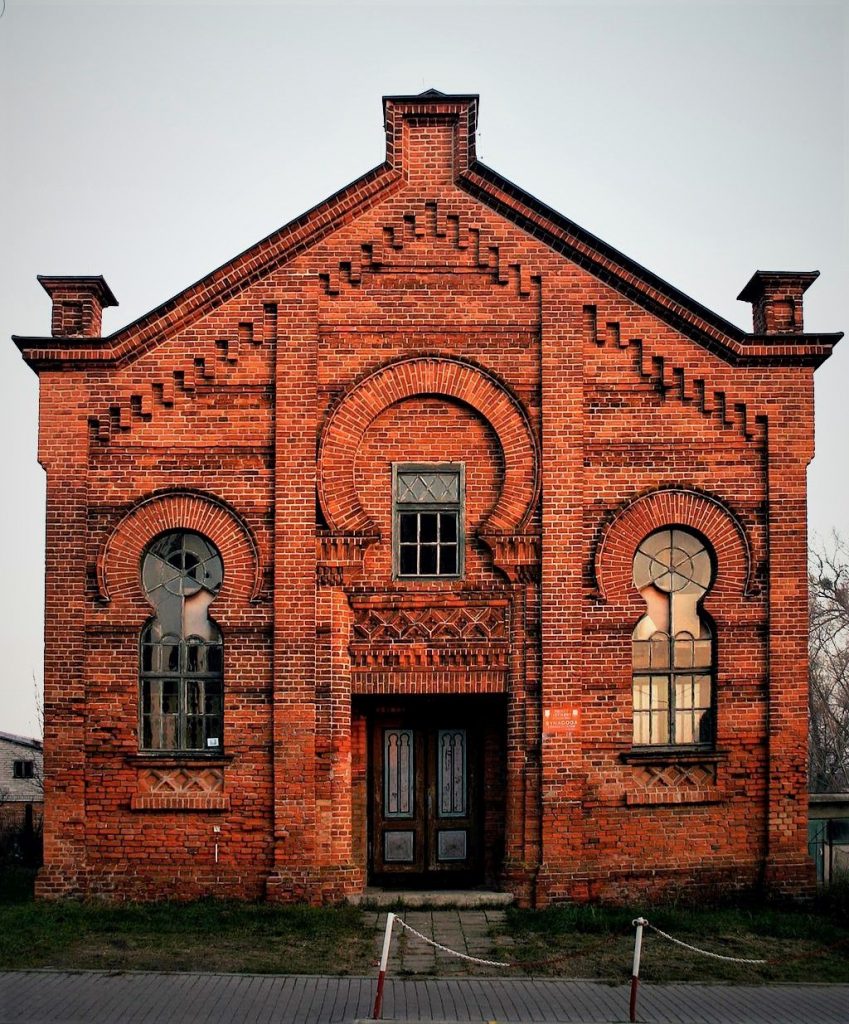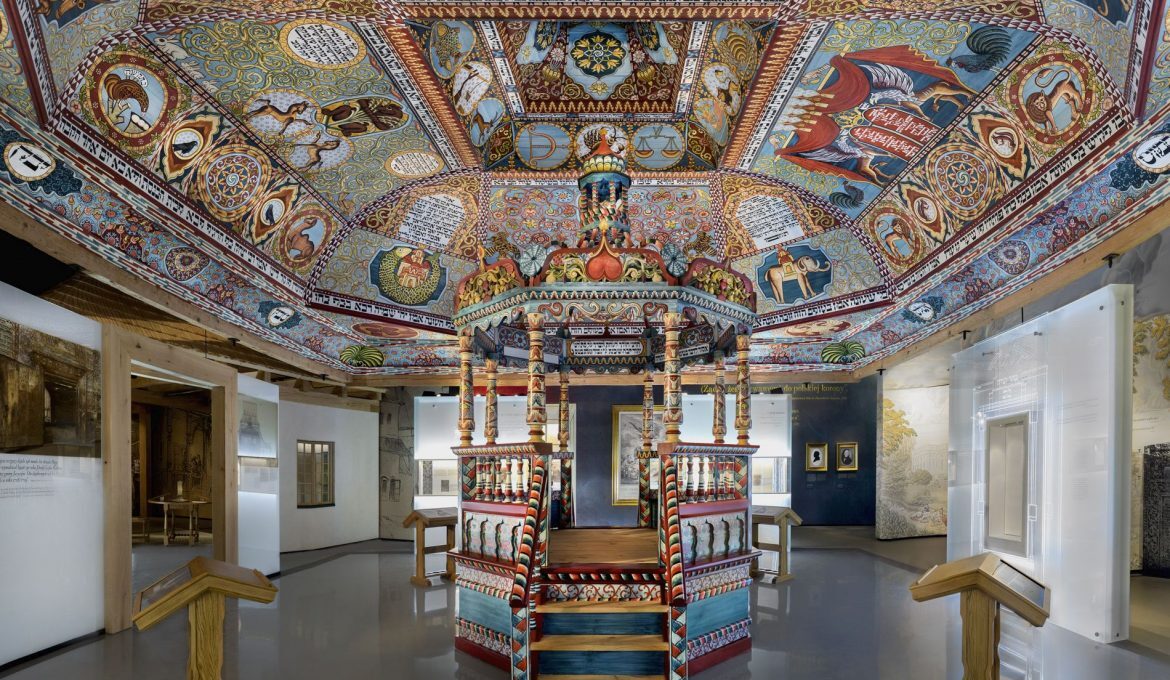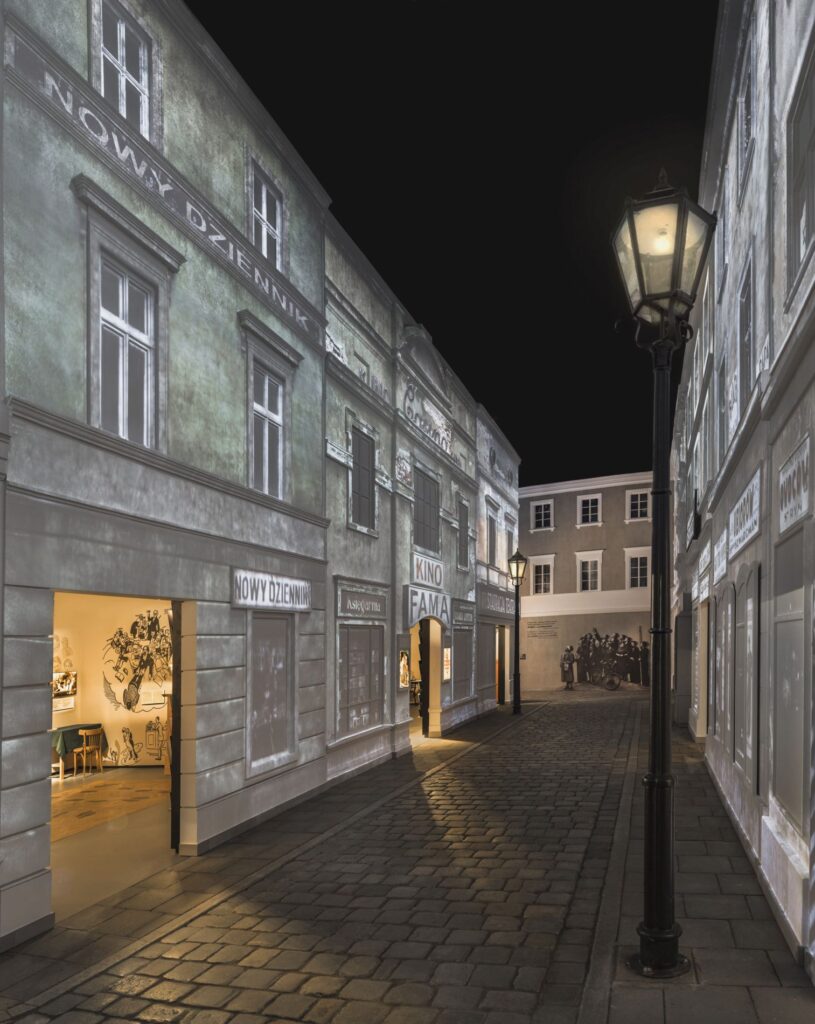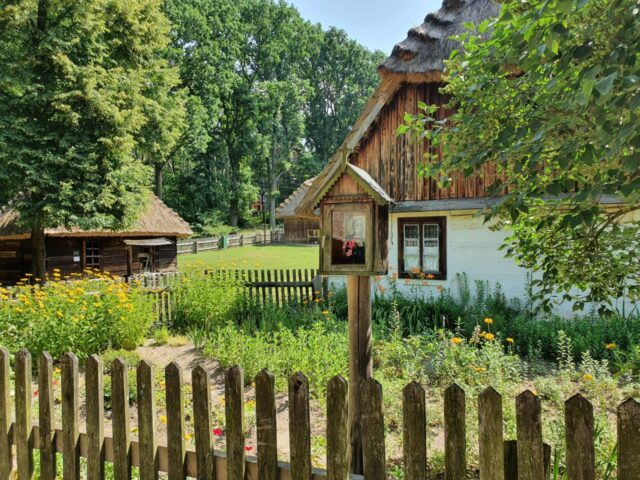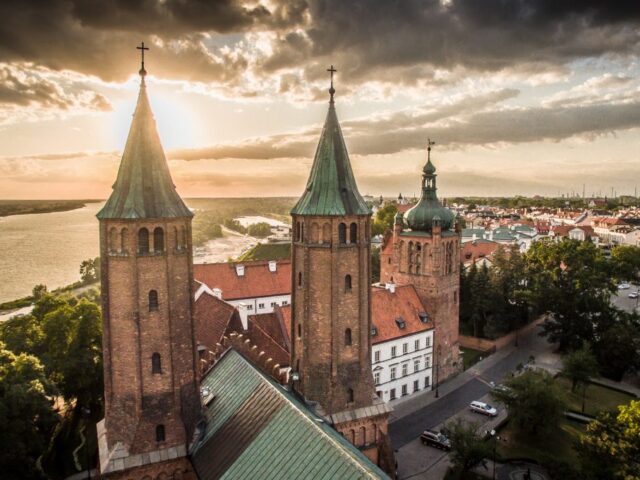While wandering around Mazovia, it is worth discovering the traces of the Jewish heritage, that are not only the traces of extermination, but above all the legacy of the coexistence of two nations. Over the centuries, the enormous contribution of the Jewish community to the economic, social and cultural life of the Polish state has been clearly visible, which reflects precisely in Mazovia.
COEXISTENCE OF NATIONS
The beginning of the presence of Jews in Mazovia dates back to the 11th and 12th centuries when the Jewish immigrants began to arrive in Poland as part of the settlement campaign. They found favorable conditions for development here and met with religious tolerance. The first Jewish settlers appeared in Płock in the second half of the 11th century. As times passed, there were more and more Jews in Mazovia. The good reception of the Jewish merchants and craftsmen by Casimir the Great and the royal care over them contrasted with the pogroms in Silesia and Western Europe.
Over the next centuries, despite various times, until the outbreak of World War II, the Jewish community in Mazovia, as in all of Poland, had good conditions for economic, social, cultural and religious development. That was permanently inscribed in the landscape of the region, in the development of trade, crafts and communication. After the Polish state regained independence, the Jewish population was the largest national and religious minority in Mazovia. Although World War II put an end to the creative coexistence of Jews, part of their legacy has survived in Mazovia, testifying to the great contribution of this community to the history of Poland.
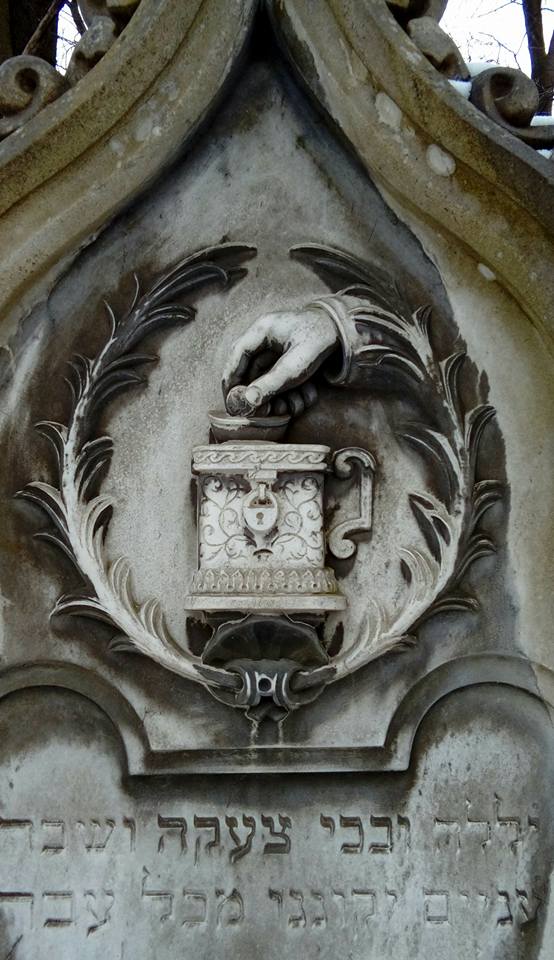
Warsaw
It is best to start your tour of the Jewish Warsaw from the Jewish cemetery in Okopowa Street, that is the burial place of many outstanding people who have entered the history of Warsaw and the history of Poland for good. The cemetery is the burial place of many outstanding people who have made their permanent mark in the history of Warsaw and even the history of Poland. You can see mausoleums and graves of Warsaw industrialists (Wawelbergs), booksellers and publishers (Orgelbrands), writers (Icchak Lejb Perec), tzadiks (from Zwoleń, Warka, Mogielnica, Mszczonów, Radzymin); historians (Szymon Askenazy), social and political activists (Adam Czerniaków, Marek Edelman), artists (Ester Rachel Kamińska). The cemetery also features the tombstone of Ludwik Zamenhoff, the creator of Esperanto, and a monument to Janusz Korczak with children, as well as the Monument to Jewish officers of the Polish Army, commemorating the murder of several hundred Jewish officers and intellectuals in Katyń, Miednoje and Kharkiv.
Warsaw can also be proud of the only theaters in Poland, and one of two in Europe where plays in Yiddish are staged. The Jewish Theater (currently at Senatorska Street) is named after Estera Rachel and Ida Kamińskich, outstanding Jewish actresses who gained fame in Poland and abroad. It is also worth mentioning that Praga Museum, where the former Jewish house of prayer was located, shows fragments of paintings depicting Jews praying at the Wailing Wall in Jerusalem and the Tom of Rachel in Bethlehem have been preserved on the walls of the prayer rooms. Near the cemetery, there is Janusz Korczak Orphanage (6 Jaktorowska Street). The director of the institution, that was opened in 1912, was Dr. Janusz Korczak, an outstanding educator and great tutor. During the war, the building was turned into a barracks, and in 1942 teachers and children were sent to Treblinka. Currently at Jaktorowska Street, there is an orphanage with a statue of Dr. Korczak in the courtyard. Those interested can visit the main hall of the building, known from pre-war photographs. Korczakianum is also active here – it is a workshop that shows the life of the „Old Doctor”.
Nearby, in Warsaw Zoo, there is Żabiński Villa, that owes its popularity to the movie „Azyl” showing the Żabiński family hiding fugitives from the ghetto.
Warsaw’s Praga, where the biggest percentage of Jewish residents was recorded among all the districts, is an absolutely unique enclave that allows you to travel along the Jewish heritage. The examples are: Władysław IV Secondary School where Janusz Korczak was studying, the revitalized Educational Building of the Warsaw Jewish Community, Michał Bergson at 20 Jagiellońska Street or the former mikveh at Kłopotowskiego Street, or the Jewish Dormitory at 7 Sierakowskiego Street, where Meachem Begin lived – then a law student at the University of Warsaw, later Prime Minister of Israel and the winner of the Nobel Peace Prize.
It is best to discover the Jewish Warsaw by strolling thoughtfully.
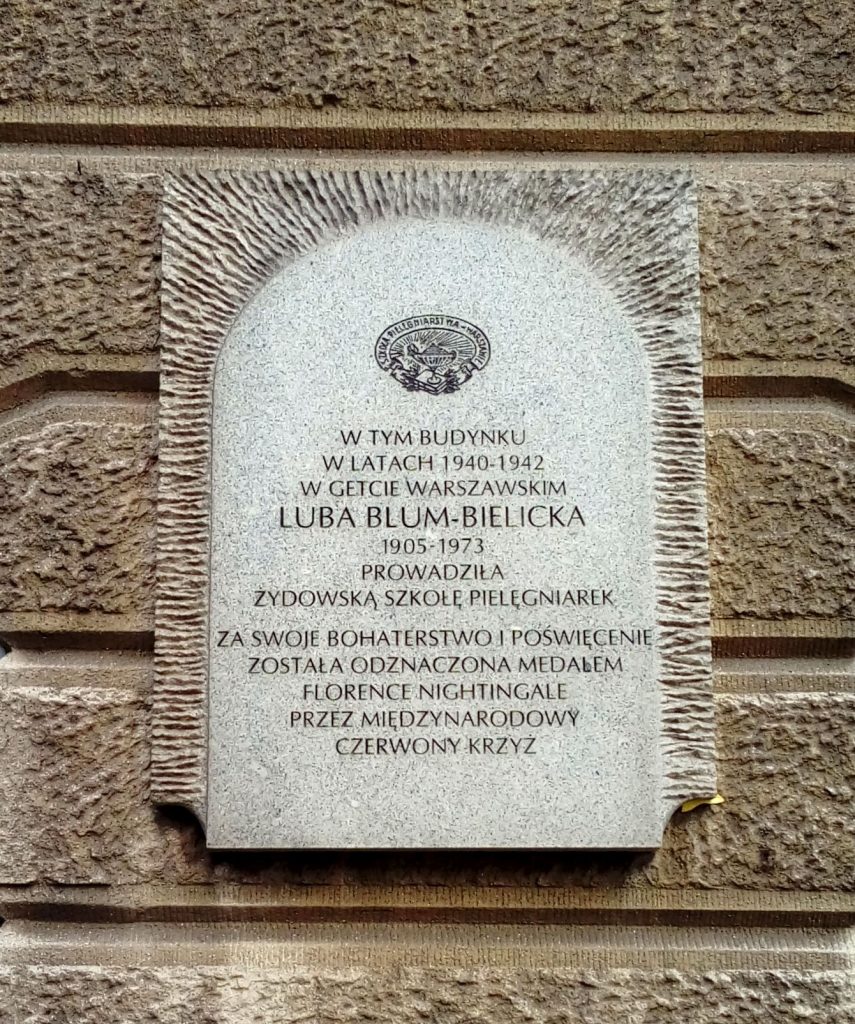
The first route
The first route is in a ghetto, where in 1940, on an area of 3km2, the Nazis crowded and separated around 450 000 people from the world with a 3-meter wall. Most of them were going to die. After the uprising in 1943 and the deportation of the last inhabitants of the extermination camp in Treblinka, the Nazis demolished the facilities in the ghetto, but its traces have survived to this day. These are, among others: 22 commemorative plaques, plates showing the boundaries of the district and fragments of walls, among others at 62 Złota Street, 55 Sienna Street and 11 Waliców Street. Our walk of the ghetto starts at Złota Street (there is a plan of the ghetto at no 62) and we can go to Sienna Street. It is worth paying attention to, among others, the building of the former Bersonhn and Bauman Children’s Hospital at number 60. It was a Jewish medical facility helping children until the last days preceding the liquidation of the „small ghetto”, when about 1000 people and staff were transported to Treblinka. From Sienna Street, passing Twarda and further north, you can get to Waliców Street, which in November 1940 was almost entirely within the ghetto. Fragments of the wall of the former Junga brewery, part of the ghetto border, have been preserved by building on the corner of Pereca and Waliców streets, and the walls of the production hall survived. It is registered in the register of monuments.
The main building of the Jewish Community (Grzybowska 26/28, now the Radisson Blu Hotel) did not survive. It was here on the day of the commencement of the great ghetto liquidation action, that Adam Czerników, the president of the Judenrat, committed a suicide. Further to the northwest, the route goes to the junction of Chłodna and Żelazna streets, to the Partowicz tenement house. This is where the Nazi Nordwache post was located, controlling the small and great ghetto and the bridge connecting them. Right next to the tenement house, on the pavement, there is an outline of a German bunker located in this place. The reflection of the Nordwache post is commemorated by a plaque on the wall, and the existence of the bridge over Chmielna street is the reminiscent of a luminous art installation, a monument symbolically dissolving against the sky (the so-called Memorial Footbridge at the intersection of Chłodna and Żelazna streets).
The second route
The second route leads to POLIN and the Umschlagplatz and the Memorial Route of the Martydom and Straggle of the Jews 1940 – 1943. You can start walking on Mordechaj Anielewicz Street, the name of which commemorates the heroic leader of the Warsaw Ghetto Uprising. Located at the number 6, the POLIN Museum of the History of the Polish Jews is a cultural institution that shows 1000 years of the history of Jews in Poland, from the Middle Ages to the present day. In 2016, POLIN Museum was awarded the prestigious European Museum of the Year Award. It was one of 33 awards and distinctions awarded to POLIN in less than 10 years! The mission of the facility is to restore and protect the memory of the Jewish history, as well as to create a dialog center, showing a new quality of communing with history.
The further route brings you to the Ghetto Heroes Square, where the Monument to Warsaw Ghetto Heroes is located. The monument, designed by Natan Rappaport, was erected on the site of the first battles between Jews and Nazis during the ghetto uprising. The shape resembles a fragment of a massive wall, on which there are two bas – reliefs bearing meaningful names: Fight and March for Extermination. Nearby, there is a modest monument commemorating the fallen, and it was built right after the war. At Umschlagplatz, located on today’s 10 Stawki Street, there was a former railway ramp. Together with the buildings, it was a place where Jews from the Warsaw ghetto were grouped before being transported to extermination camps, including Treblinka. About 4000 – 5000 people were deported daily form the Umschlagplatz. The ending of the route is at the Memorial Route of the Martyrdom and Struggle of the Jews 1940 – 1943. Established in 1988 – 1989 the avenue consists of over twenty syenite forms, located along Zamenhoffa, Dubois and Stawki streets.
The route is an integral part of the Monument to the Ghetto Heroes and the Anielewicz Mound. It was placed in the place of the bunker (former 18 Miła Street), where members of the Jewish Combat Organization led by Mordechaj Anielewicz, fought the last hours of an unequal, liberating fight with the occupant.
Nearby you can also admire the Jan Karski bench and the statue of Willy Brandt.
The third route
The third route is Próżna Street and Grzybowski Square. The name Próżna comes from green areas in 1770s. In the 19th century, it was already a bustling commercial and residential street, mostly inhabited by Jews. During the occupation, the street was included in the ghetto for some time. During the Warsaw Uprising, there were fights taking place here and some the building were destroyed. Nevertheless, Próżna is today one of the few streets in the capital, where large fragments of the buildings have survived – tenement houses at no 7, 9, 12 and 14. The Próżna Street is worth visiting at the turn of August and September during the Singer’s Warsaw Festival. On the walls of the buildings there are then the signs of old shops. Colorful stalls appear in the streets and you can hear klezmer music. Together with the Singer’s Warsaw Festival, held every year at the end of August, the pre-war atmosphere returns. At Próżna Street and around the Grzybowski Square, there are many unusual and tastefully arranged eateries, for example a Menorah that combines tradition and modernity. The facade of the Church of all Saints looks out to Grzybowski Square, in the center of which there is a cascading pond surrounded by greenery. Until the mass deportation in 1942, many Jews in hiding were sheltered in the church. It is not far from Grzybowski Square to the Nożyk Synagogue, the only surviving synagogue. The eclectic building was erected in 1902 by a married couple of wealthy merchants, Zalman and Ryfka Nożyk. They lived in Próżna Street in the tenement house at no 7. There is also a small shop with kosher food and souvenirs in the synagogue building.
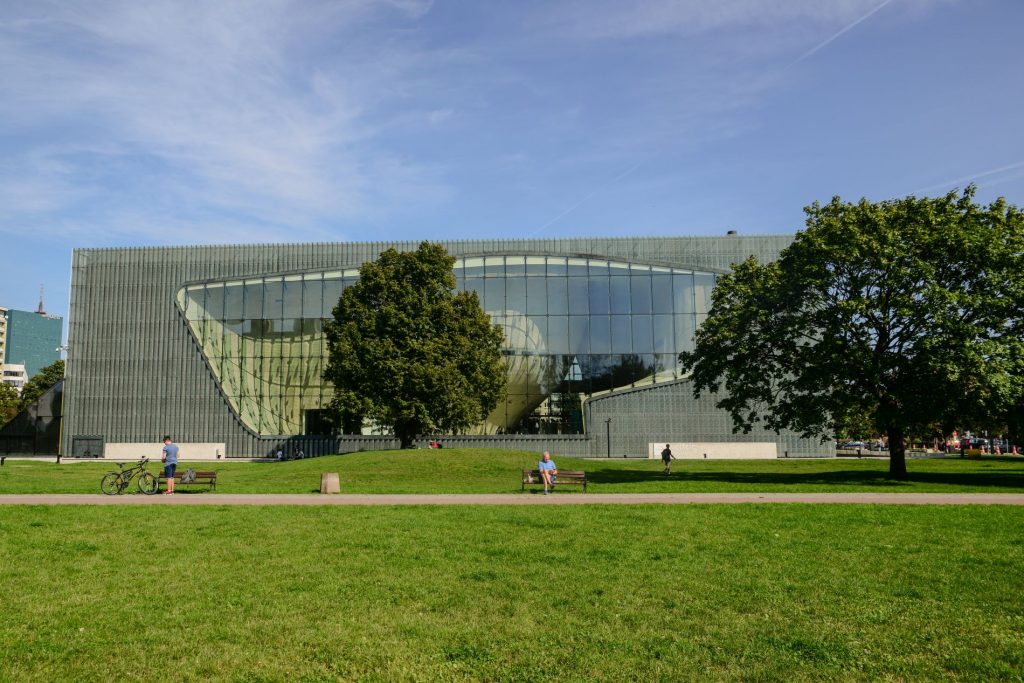
Mazovia
When leaving Warsaw towards the south, it is worth visiting Góra Kalwaria. It was here that the first Jewish settlers settled in 1802. Until the mid 19th century, they erected, among others, bet ha-mid rash and a synagogue. The Alter dynasty of tzaddiks also moved here. You can visit the Jewish cemetery at Kalwaryjska Street with over 130 tombstones, a former synagogue on Pijarska Street and a house of prayer as well as a tzadikk’s house. Judaica is also in the collection of the Private Regional Museum at 41a Marianki Street.
Further south is Mszczonów, where the Jewish community was established around 1763. The community was mainly occupied with running inns, trade and crafts. The most valuable monuments, apart from the mikveh and the collections of the Chamber of Remembrance, include the Jewish cemetery located on the Warsaw – Katowice road. Although it is large, it is only a fragment of the former necropolis. In its northern part, there are matzevot from the beginning of the Jewish cemetery.
Another place is Przysucha with the synagogue built in 1774 – 1777, that before the war was nicknamed „the magnificent”. Although the post war renovations did not return it to its former splendor, in the interior you can admire the remains of the old decor: polychrome, ornaments, frescoes with Hebrew inscriptions and columns with griffins. Going further we get to Radom, where the 19th century was the period of the most intensive economic development of the local Jewish community. Bankers, wealthy merchants, lawyers and doctors had their houses in the city center. Today, on the site of the former synagogue at Bożnicza Street, there is a monument in memory of the Jews of Radom. Noteworthy is also the restored, extensive Jewish cemetery at Towarowa Street and the former Asylum for the Old People of the Mosaic Faith at Warszawska Street.
On the southern outskirts of the voivodeship, Szydłowiec is a beautiful city with a very interesting history. The earliest records of Jews in Szydłowiec come from the end of the 16th century. Until the mid 17th century, the Jewish community was small and did not expand. The security and privileges provided to Jews by the owner of Szydłowiec, Dominik Radziwiłł, contributed to the dynamic development of the Jewish community. Before World War II, Jews constituted about 76% of the population. A beautiful example of sacred architecture is the former Baroque – Classicist prayer house at 3 Grabarska Street. The cemetery in Wschodnia Street has been partially restored. You can also see Judaica in the Museum of Fold Instruments at Sowiński Street.
North of Warsaw, it is recommended to see Płońsk, which owes its fame to Dawid Ben Gurion, the creator of the independent state of Israel as he was born here. In the 17th century, the first synagogue and the Jewish cemetery were built. In the mid 18th century, Jews were allowed to trade and produce alcoholic beverages. In 1819, out of 32 hams operating in Płońsk, 28 belonged to the Jews. Most of the houses and prayer houses belonging to the Jewish community, were unfortunately lost with the war, but the city honored the memory of an outstanding resident by marking the David Ben Gurion tourist route, that includes:
- „Bengurionówka”- the house at the Płońsk market square, where David Ben Gurion lived until 1906 (21a 15 Sierpnia Square).
- the site of the former synagogue (5 Warszawska Street)
- the square in the place of the house where Dawid Ben Gurion was born, and today stands the Tree of Remembrance (Wspólna Street)
- Lapidarium at the former Jewish cemetery (Warszawska Street)
- building of the railway station in Płońsk, from where at the end of 1942 the Germans deported the Jews of Płońsk to extermination camps
- Płońsk’s institutions buildings with plaques commemorating Jews murdered during World War II, not only from Płońsk and the surrounding area, (hospital at 7 Sienkiewicza Street, building of the Public Secondary School No 2 in Płońsk at 4 Wolności Street).

Płock in further north. It was in 1237 that the settlement near the Płock stronghold received city rights. A significant Jewish minority already lived here at that time. Over the centuries, Jews strengthened their position in the city, obtaining numerous privileges. At the end of the 19th century, they owned factories, hospitals and schools. Nowadays, apart from the New Cemetery (Mickiewicza Street), the former mikveh (36 Sienkiewicza Street) and the hospital (7 Misjonarska Street), you can admire the Little Synagogue, that houses the Museum of Masovian Jews (synagogaplocka.pl). It shows the history of the Jewish settlements in Poland. The exhibition space is divided into three main thematic zones: the vestibule, the Holocaust room and the main hall.
The history of Jews in Mazovia is presented in the vestibule. The mail hall presents modern multimedia form, elements of the culture of Jews in Poland including cuisine, music, holidays, costumes and the Jewish architecture. The part devoted to the Holocaust is built on the basics of Cards from the Fire of Symcha Guterman, an eyewitness to the extermination of the world of Płock Jews, and archival photographs of the Jewish inhabitants of Mazovia.
The artistic complement to the exhibition is a multimedia show created on the basis of a Jewish cut – out. In addition to the exhibition part, the museum offers an attractive cultural and educational program including concerts, literary evenings, lectures, small theatrical performances, temporary exhibitions, educational activities for children and teenagers, presentations of feature and documentary films. Since 2013, the Museum of Masovian Jews has been organizing Płock Jewish Days, which are held in September.
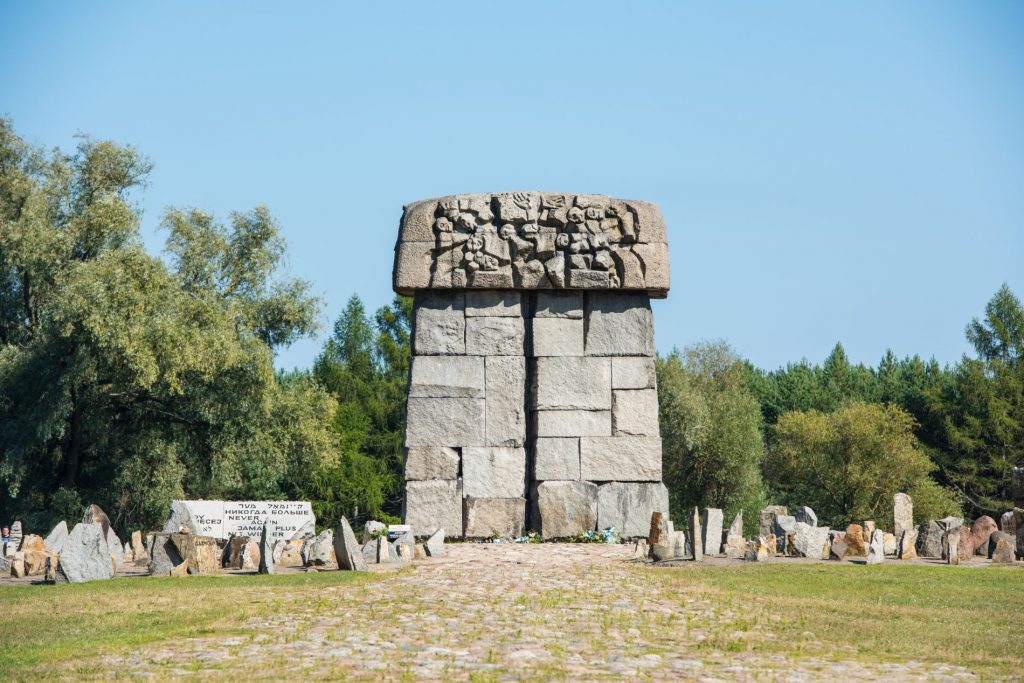
Another must see is Treblinka Museum of Struggle and Martyrdom. The museum covers the former sites of: Death Camp, Penal Labor Camp, gravel mine, place of execution and the so – called „Black Road”. The symbolic cemetery is made up of 17 000 boulders with a central monument. All these elements make up a moving picture – the memory of the place, where the Nazis killed 800 000 people.
While wandering around Mazovia, it is also worth discovering the Jewish heritage of such great historical value and, above all, it shows the unique richness of the culture and traditions of Polish Jews.
